Rolling Stone’s 200 Greatest Australian Albums of All Time
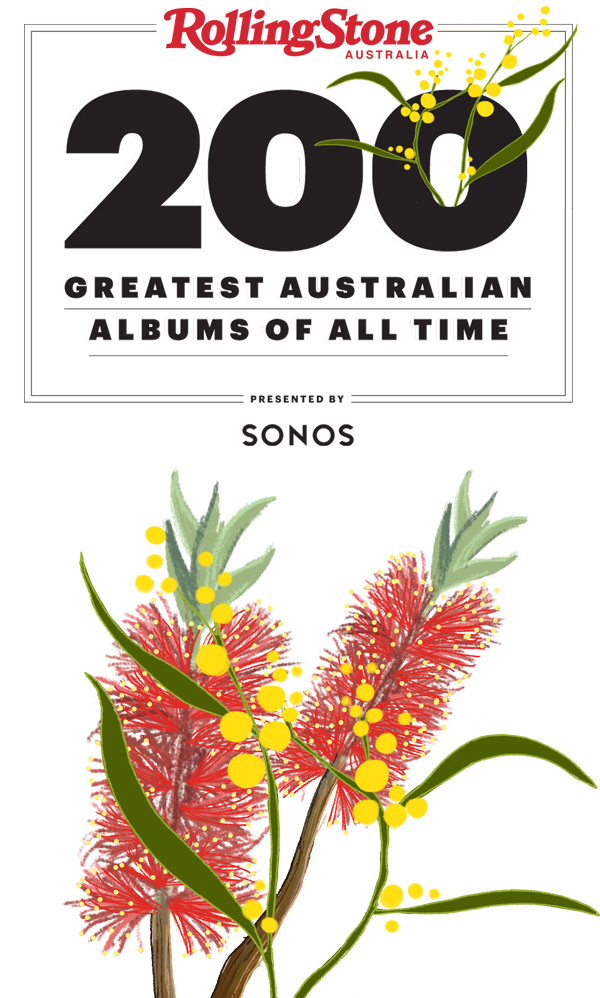

Tina Arena, 'Don't Ask'
When Tina Arena released her third album in the summer of ’94, Cold Chisel were launching their Teenage Love compilation and grunge-rock was undergoing a well-deserved purple patch. But it was Arena’s gift for soundtracking feminine emotion that cut through as a timeless masterpiece. The soaring colour of “That’s the Way a Woman Feels”, the slow-burn yearning of “Wasn’t It Good”, and the full-throated power of hit single “Chains”, seemed to arrive right on time for women the world over. The album turned its back on formulaic standards that turned piano ballads and smoky soul into commercial radio mainstays. The record was a runaway success. It sold two million copies worldwide, became one of Australia’s highest-selling albums, and is certified 10x Platinum. The pint-sized Australian-Italian may have already been a household name before the age of nine (thanks to variety TV show Young Talent Time), but it was arguably this confessional album that recruited the masses. Don’t Ask ascends above many other lionised break-up albums for many reasons, least of which is its ability to portray the resolve of a woman who did everything in her power to make the relationship work. As a one-woman inferno, Tina Arena has undoubtedly continued her run of stellar releases over the last two decades, but Don’t Ask remains her magnum opus.
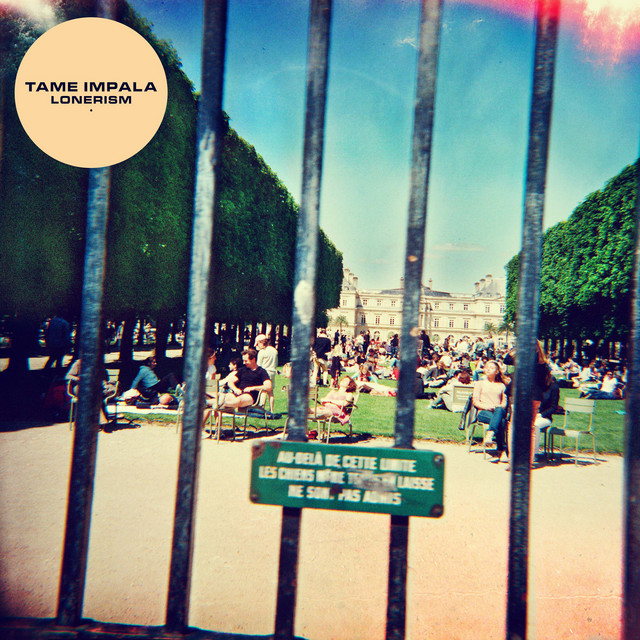
Tame Impala, 'Lonerism'
Kevin Parker’s Tame Impala was already fully-formed when it came time to release the follow-up to genre-defining debut album InnerSpeaker.
Lonerism, released in 2012, was Parker’s bridge to global recognition. The Western Australian makes a mockery of the dreaded “difficult second album”, while locating the well where all the best songs are kept.
From the opening beats and breaths of “Be Above It”, the listener is alerted to some trippy stuff to come.
Later, Parker would become a Brit Award winner and one of the world’s most highly-regarded producers. Though his sound would veer into psychedelic pop, Lonerism is psychedelic rock, perhaps his last of that type.
Parker plays all the instruments, proficiently. And he pays attention, always. Whether it’s the rolling beats on the first number, the chunky rhythm-section groove on “Elephant”, or the unusual fade-in that greets “Keep on Lying”.
When Mark Ronson awarded the Songwriter of the Year trophy to Parker at the 2021 APRA Awards, he paid tribute to the Australian’s hit-to-miss ratio. Really, across Parker’s catalogue, there are no duds. Lonerism sets the tone.
It’s peppered with standouts, including “Apocalypse Dreams”, a dreamy number that somehow releases the spirit of early Pink Floyd. “Feels Like We Only Go Backwards” and “Elephant” are instant classics.
“Well, he feels like an elephant / Shakin’ his big grey trunk for the hell of it,” sings Parker. One gets the feeling Syd Barret would have approved.
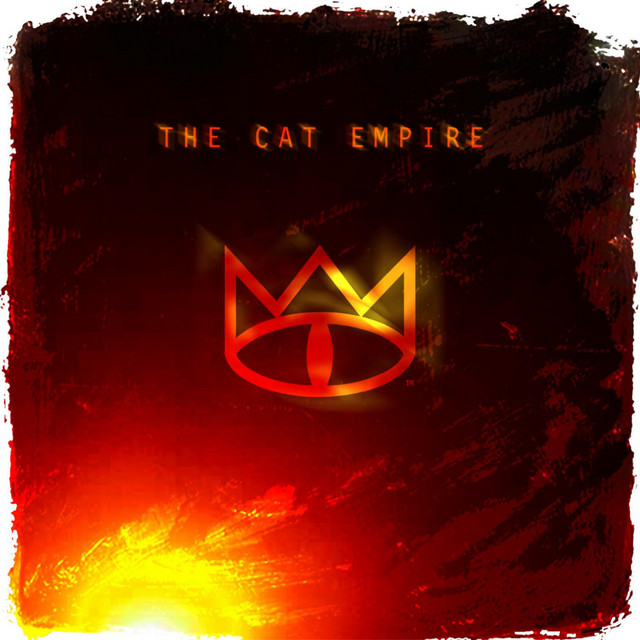
The Cat Empire, 'The Cat Empire'
By the time The Cat Empire released their self-titled debut album they had already amassed a devoted following of fans from around the world, thanks to their reputation as a phenomenal live act. Across Europe, America, and their home continent of Australia, word had spread of a group of Melbournians that would play raucously and joyously, long into the night. They were a band whose reputation had very much preceded them.
When the album did arrive it did not disappoint. What makes The Cat Empire so special is how it so effectively distills the unmatched energy of the band’s live performances into the format of a studio album. At its core, the album is a celebration of music and its power to unite, declaring in the opening track “How to Explain?” that “Music is the language of us all”. It’s a mantra by which the band themselves lived, having largely bonded by jamming together in Melbourne clubs.
Combining elements of Latin, jazz, ska, and reggae with Australiana to create something entirely new, The Cat Empire is unbound by a single genre and instead best defined by its unapologetic and unreserved rambunctiousness. Mariachi-like brass sections blare, punctuated by sophisticated yet danceable rhythms, while vocalists Felix Riebl and Harry James Angus infect listeners with their enthusiasm and love for the music. As a debut album it effortlessly proved to the world that the cult live act were just as effective in the studio as they were on stage.
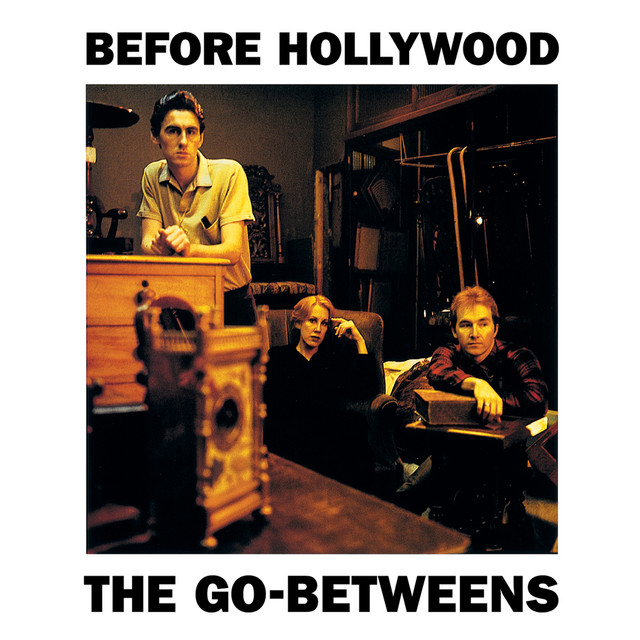
The Go-Betweens, 'Before Hollywood'
In 1976, Robert Forster and Grant McLennan met at the University of Queensland where they were studying a Theatre Arts course. Together, they formed The Go-Betweens; an indie-rock outfit that remains the ghost in the backbone of many Australian indie bands today. Before Hollywood was McLennan’s pick as one of two definitive Go-Betweens albums, claiming to the Herald Sun, “It’s a nice combination of our skewered and classic songwriting, but with a heavy underground feeling”. The album was recorded in the English seaside town of Eastbourne by John Brand who worked with XTC and Magazine. It was the first Go-Betweens album to list all songwriter credits as “Forster/McLennan” marking a shift that would see both members equally chipping into their records. Their final sound, described by Foster as someplace between The Monkees and The Velvet Underground, sparkles with tragic sentiment and nostalgic pop. The album crescendos with the magnum opus Grant wrote for his mother “Cattle and Cane”; a song that has stained the memory of Australian songwriting history forever. “She hasn’t heard it yet because my mother and stepfather live on a cattle station and they can’t get 240 volts electricity there, so I have to sing it over the phone to her,” said McLennan in 1983. The album remembers those people and places forever fading in the light of quirky riffs and dream-soaked synth overdubs. McLennan intones: “From time to time / The waste memory-wastes / The waste memory-wastes / Further, longer, higher, older”.

Dirty Three, 'Horse Stories'
In the mid-Nineties, it was hard to talk about “underground music” without Melbourne’s Dirty Three forcing their way into the conversation. Having formed in 1992, the trio had wasted no time in making a name for themselves for their riotous performances, which—despite their instrumental nature—featured the same sort of energy and raucous behaviour as any standard rock show. With a few albums under their belt by the middle of the decade, Dirty Three had maintained a rather prolific output in just a few short years, with the majority of their releases serving as a document of their sound and what they had been performing live. While 1998’s Ocean Songs would see them writing music specifically for the album, violinist Warren Ellis explained in 1998 that “Horse Stories was the first time where we went in and tried to record a record”. The first time the powerful trio had written in such a way, Horse Stories would therefore serve as something of a transitional period for the group, with their compositional and performance skills being refined for the very nature of the recorded medium. As such, the crashing and resonating instrumentals of the album—as seen on the likes of openers “1000 Miles”, “Sue’s Last Ride”, or their version of “I Remember a Time When You Used to Love Me”—ebb and flow with the sort of cinematic brilliance that rewards close listening. Sure, they’d translate to the live stage, but this is how they were meant to be played.
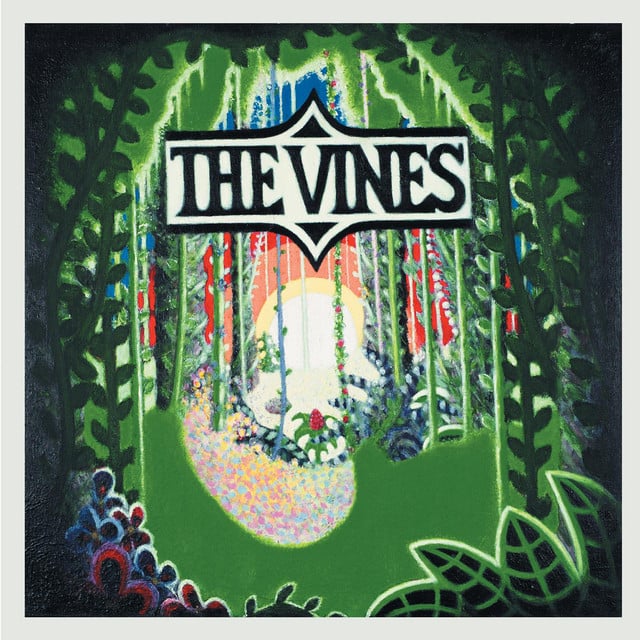
The Vines, 'Highly Evolved'
As the garage rock revival of the early Noughties gained mass popularity, names like The Strokes, Yeah Yeah Yeahs, and Interpol helped make New York City the happening music scene of the era. Meanwhile, across the Pacific ocean, Sydney outfit The Vines were gearing up to steal that thunder.
Forming in the mid-Nineties, the group’s slow and gradual rise came to head in 2001, when the British press picked up their work, championing the group as the “second coming of Nirvana”. When debut album Highly Evolved followed the next year, the hype seemed almost proven, with the group’s frenetic and reflective tracks making them seem like the product of a youth spent listening to Nevermind and Revolver on repeat.
Armed with a knack for writing ferocious rock numbers like its title track or “Get Free”, frontman Craig Nicholls’ energy, erratic onstage behaviour, and arresting performance style made him a must-see name within the music scene. The US public saw this first-hand when The Vines appeared on Late Show with David Letterman, with Nicholls’ howled vocals and set destruction both putting the group on the map, and simultaneously helping underline the dangerous combination of stress and mental health struggles.
For a brief moment in time though, The Vines were the future of Australian rock. Resounding garage numbers sat alongside psychedelic instrumentals, and showcased a versatility and energy that saw the world look to Australia with a sense of jealousy. The Vines were ours, and everyone else wanted them.
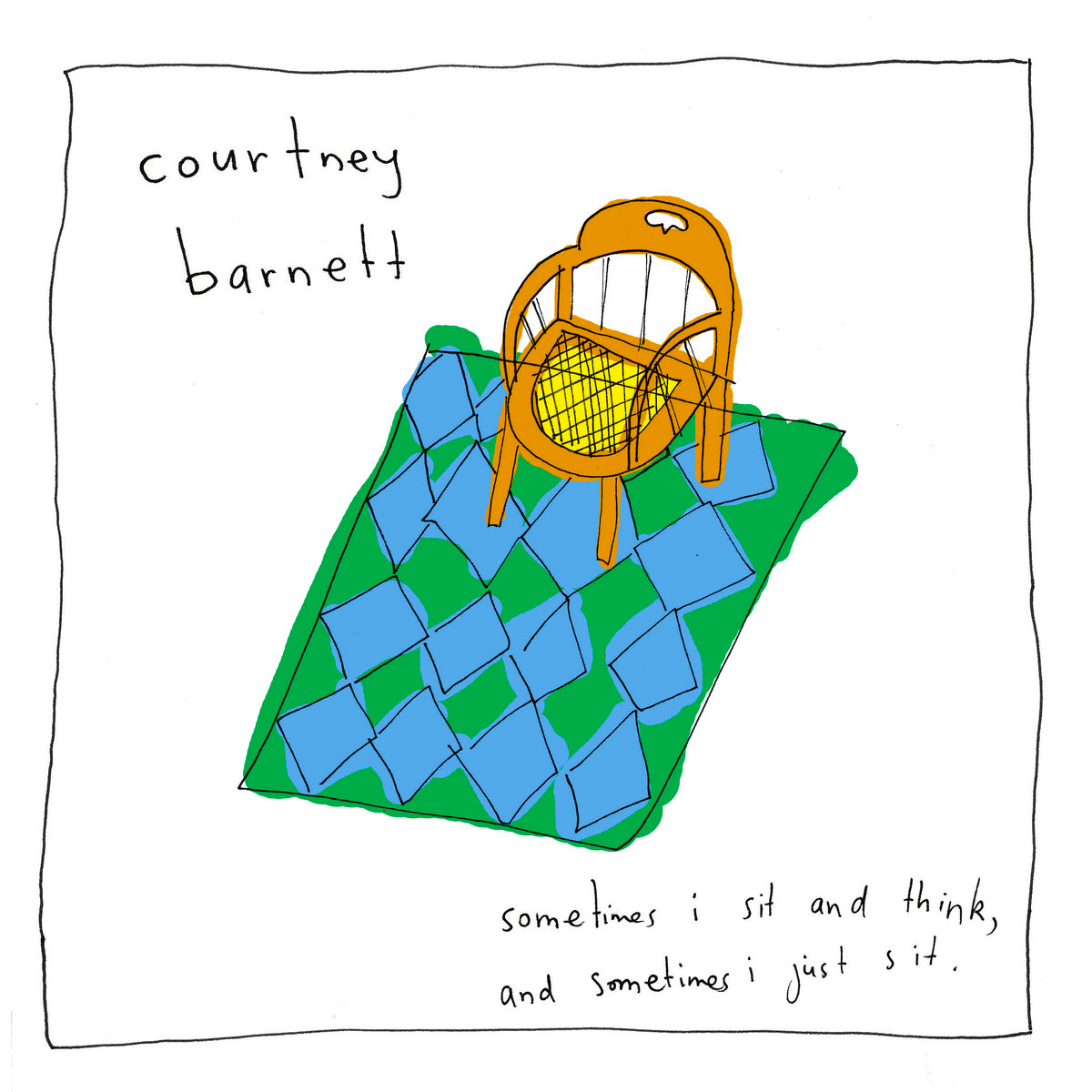
Courtney Barnett, 'Sometimes I Sit and Think, and Sometimes I Just Sit'
By the time Courtney Barnett released her debut album in March of 2015, she was in something of an unenviable position. Sure, she’d practically become a household name within the world of indie music thanks to her first two EPs (and subsequent compilation), but with numerous awards, nominations, and the spotlight of international acclaim and attention shining brightly upon her, there are some pretty high expectations at play. But in typical Courtney fashion, if any stress was apparent, it wasn’t showing, with Sometimes I Sit and Think, and Sometimes I Just Sit fast becoming one of the year’s most beloved albums upon release. Maybe it was the seemingly-effortless way in which Barnett delivered her songs; maybe it was her deadpan vocal style, her witty songwriting, or the high energy that was packed into almost every song on the record. There was something incredibly unique and inviting about an album such as this, and while Australian fans rallied around Barnett as one of the country’s newest and biggest exports, the attention came thick and fast globally, too. While eight ARIA nominations came her way, Barnett even found herself up for Best New Artist at the Grammys, and won the ever-prestigious Australian Music Prize the following year. It feels hard in hindsight to appreciate how huge such a humble home-grown record could be on the global scale, but it’s not difficult to see just how big Courtney Barnett has become in the years since.
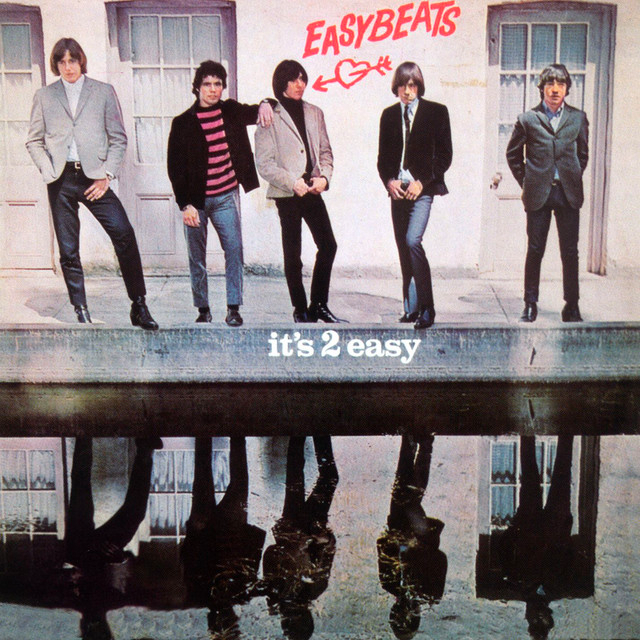
The Easybeats, 'It's 2 Easy'
The second album by The Easybeats is another rock’n’roll romp demonstrating the strong writing partnership of Stevie Wright and George Young. Again, under the production vision of the legendary Ted Albert, It’s 2 Easy follows the band’s landmark debut album, Easy.
Featuring singles like “Wedding Ring”, “Women (Make You Feel Alright)”, “Sad and Lonely and Blue” and others, an album like It’s 2 Easy is one of those classics you can almost imagine landing in the hands of a teenage girl in the Sixties, promptly leading her to lose all sane inhibitions.
That frantic, though controlled, brand of pop chaos directly lifted from what was coming over from the UK is at its finest on songs like “Somethin’ Wrong” and “Wedding Ring”, though it’s in moments like “I’ll Make You Happy” that we get to see more shades to Wright and Young’s pop writing sensibilities.
It’s 2 Easy doesn’t reinvent the wheel when it comes to commercially successful rock‘n’roll of the time, but it was never meant to. It features some truly fun and inspired moments of songwriting and delivery from The Easybeats; highlighting the impact their catalogue would have on Australian rock and pop music in the decades to follow.
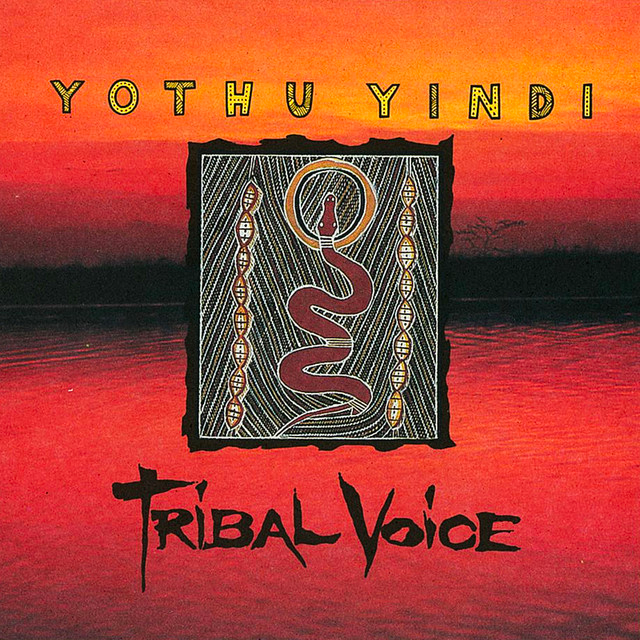
Yothu Yindi, 'Tribal Voice'
Yothu Yindi translates to “child and mother” in a number of languages spoken by the Yolŋu peoples of northeast Arnhem Land. It is the weaving of sacred Yolŋu traditions that underpin many Yothu Yindi songs, which makes Tribal Voice a hugely important part of Australian music history.
Using music as an instrument of activism by amplifying voices once stifled, Yothu Yindi found fame through their innovative blend of rock and Indigenous performance traditions, their tracks converging heavy dance beats, clap sticks, and didgeridoo, with stark messages that demanded to be heard.
This, of course, is most evident in the record’s hit single “Treaty”, written by Yothu Yindi members Mr Yunupingu, Stuart Kellaway, Cal Williams, Dr G. Yunupingu, Mikayngu Mununggurr, and Witiyana Marika, as well as Paul Kelly and Midnight Oil frontman Peter Garrett.
Speaking of the origins of the track, late Yothu Yindi band member Mr Yunupingu said, “Bob Hawke visited the Territory. He went to this gathering in Barunga. And this is where he made a statement that there shall be a treaty between black and white Australia.”
He continued, “Sitting around the campfire, trying to work out a chord to the guitar, and around that campfire, I said, ‘Well, I heard it on the radio. And I saw it on the television’. That should be a catchphrase. And that is where ‘Treaty’ was born.”
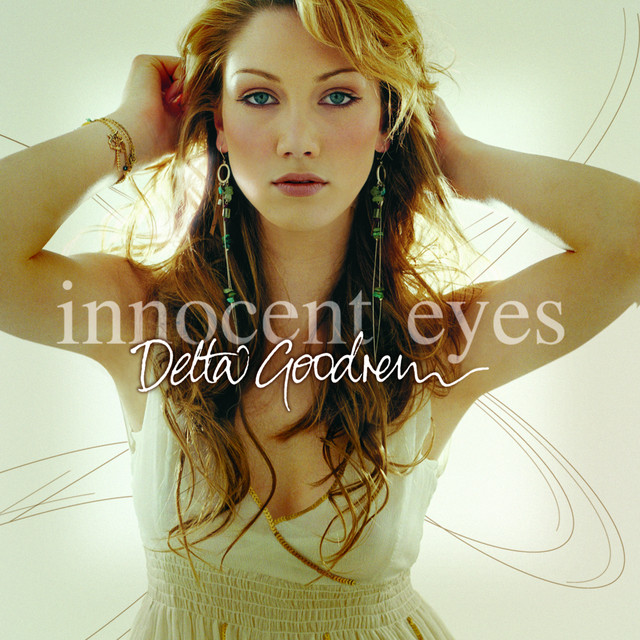
Delta Goodrem, 'Innocent Eyes'
When Delta Goodrem was 14, she sent a demo CD to the Sydney Swans with a note asking if she could sing at one of their games. She didn’t get the AFL show, but she did catch the attention of manager Glenn Wheatley, who negotiated a record deal with Sony Music less than a year later. With a voice born for ballads of Céline Dion proportions, and an innate ability to turn the piano into a dramatic adventure, Goodrem entered the music industry with a masterpiece. Innocent Eyes is a confessional blockbuster for all its tales of heartbreak and treachery—tales that shocked many for their astute wisdom from an 18 year old, but experiences easily recognised by fellow teenage girls. Girlhood totems like propulsive first single “Born to Try”, grief-stricken adagio “Lost Without You”, and the dark, mournful “Not Me, Not I”, saw the record tagged with a “guilty pleasure” descriptive by critics—mostly due to her fast rise to fame and the ensuing tall poppy syndrome that comes with it. Goodrem is at her best when she’s breaking hearts, and “My Big Mistake”, where she channels an emotional regret, is one of the album’s more underrated songs. Commercially, Innocent Eyes was a triumph. It spent 29 weeks at number one and became Australia’s best-selling album of the Noughties.

Sarah Blasko, 'As Day Follows Night'
From singing at church to winning ARIA Awards, Sarah Blasko’s As Day Follows Night embodies growth as a musician, and as a person. With strong themes of life and love throughout the 2009 album, Blasko is a storyteller. While navigating a relationship breakdown, as evident in clear-cut titles like “Lost & Defeated” and “Hold on My Heart”, surprisingly, the resounding impression on the singer-songwriter’s third album is one of resilience and light.
Throughout the 12 tracks, Blasko bridges contemporary folk and indie-rock styles, while her theatrical influence is clear. It’s unsurprising she began crafting the album while composing the score for a production of Hamlet. For the first time, Blasko wrote every song on the album alone—the delightedly juvenile “Over & Over” the only exception, co-written with juggernaut David Byrne. The childlike inflection is also resonant on “Hold on My Heart”, the up-tempo fun carried through skillfully placed piano runs and a prominent backbeat. A repetitive drum beat thrives on “We Won’t Run”; combined with alluring vocals and an overarching sense of inspiration make it the album standout.
As Day Follows Night showcases a more acoustic, stripped back Sarah Blasko. This rawness and willingness to expose her authentic self—emotionally and musically—is what makes the album so powerful. With subtle string and piano arrangements favoured over electric guitars and keyboards this time around, Blasko’s delicate vocals are given the space to demand the attention they deserve.

Flume, 'Skin'
Saturated in pure experimentation, Flume’s sophomore record Skin set the blueprint for electronic music moving forward. It’s an album that catapulted Flume’s career to global headliner status and saw him join the elite club of Australian Grammy Award winners, and rightfully so. With the commercial success of “Never Be Like You” and “Say It”, the Australian producer became a household name outside of the festival circuit, which paved the way for him to experiment even further with his music and live shows. Now he’s able to artistically break pot plants on stage while performing.
Taking the foundations from his debut self-titled album, he dived into a pop-hook experimentation that led to some of the biggest radio and club anthems of 2016. Collaborating with the likes of Tove Lo, AlunaGeorge, and Little Dragon, he pushed himself as a songwriter and added an emotional twist to the project. But he also took a side step into hip-hop, with some huge collaborations with Vic Mensa and Vince Staples that felt like a gradual growth from “On Top” on his debut.
The 16-track record is a time capsule in itself of 2016-2017, from the songs that dominated radio and charts alike, to the euphoric highs the rest of the tracks went on to create at festivals and headline shows worldwide.
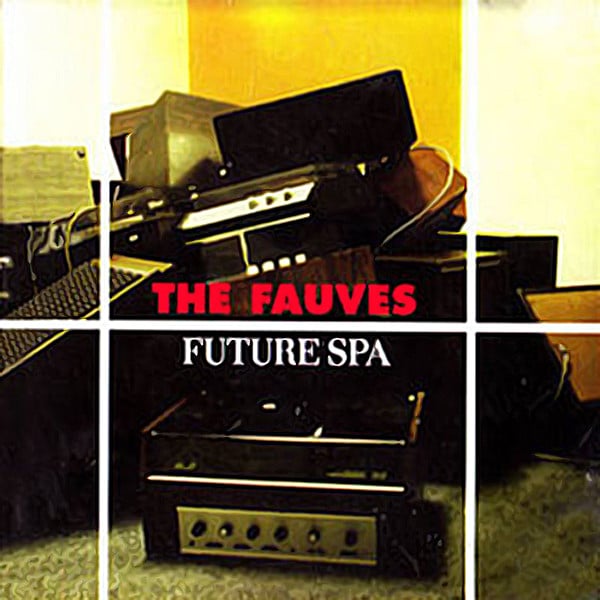
The Fauves, 'Future Spa'
By 1996, The Fauves had two albums and two EPs to their name, and after disappointing sales for the former, the band found themselves in the midst of a self-described downward spiral. Instead of packing it in though, they persevered, emerging from the studio with a raft of songs that were equal parts dark and dirty, whilst maintaining a unique sense of innocence and humour that was unlike any of their contemporaries. The deep, downtuned riffs of tracks like “I Love the Fight Game” and “That’s the Lifestyle” were at odds with the introspective bliss of “Understanding Kyuss” and “I Wrote You a Power Ballad”. Meanwhile, the commercial appeal of “Dogs Are the Best People” and “Self Abuser” sat effortlessly alongside the suburban nostalgia of “Skateboard World Record” and “Big Brother Age”, showcasing a new side of The Fauves that the wider public hadn’t seen before. It seemed to resonate, too, with the record becoming the band’s biggest-selling release, and even earning them an ARIA nomination for Best Alternative Release. It might not have translated into the elusive superstardom for the Melbourne quartet, but it remains essential listening from one of the country’s most underrated (and frequently mispronounced) bands.
Frontman Andrew Cox croons on perennial fan favourite “Understanding Kyuss”: “Crank it up, I really like this bit / Fuck, that riff sounds really sick”. It’s not just a slick lyric, it’s the rallying cry of every fan who listens and loves this glorious artefact of the Nineties alternative.
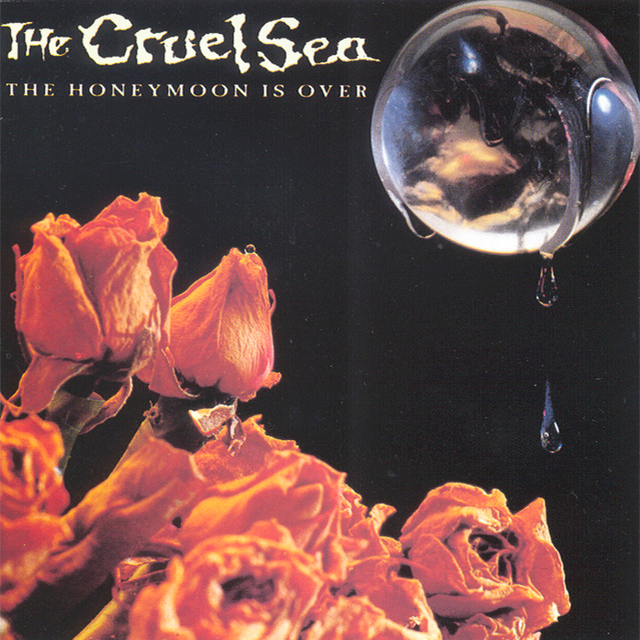
The Cruel Sea, 'The Honeymoon Is Over'
Once Beasts of Bourbon legend (and future Johnny Cash interpreter) Tex Perkins finally joined Sydney instrumentalists The Cruel Sea as a full-time vocalist, it yielded this ARIA-dominating triumph of mood and atmosphere. Blending vintage American blues and roots with splashy surf and spaghetti-western licks, the band provided a vivid backdrop for Perkins to truly flex as a scenery-gnashing frontman. He oozes anti-hero sex appeal amidst the playful anatomical inventory of “Black Stick” and the salty kiss-off of a title track, complete with the promise to change his tattoo to another girl’s name. Yet he’s equally capable of slow-burn charm on “Blame It on The Moon” and “Let’s Lay Down Here & Make Love”, closing out the record with something like romantic redemption.
Tapping coveted Nick Cave collaborators Tony Cohen and Mick Harvey to produce, The Cruel Sea especially shine as players here. Dan Rumour’s rust-hued slide guitar growls and prowls every bit as memorably as Perkins’ cigarette-raked barroom baritone, with a run of instrumental tracks teasing out such geographically specific influences as Hawaiian exotica (“The Right Time”) and Meters-style Cajun grooves (“Orleans Stomp”) on the way to organ-warmed reggae (“Naked Flame”, “X-N-Pop”).
Perkins’ striking tenure with the band would yield another three records, but this is their definitive moment together—and the darkly unruly album that ambushed the grunge-era mainstream and made everyone’s stereo just that bit cooler by association.
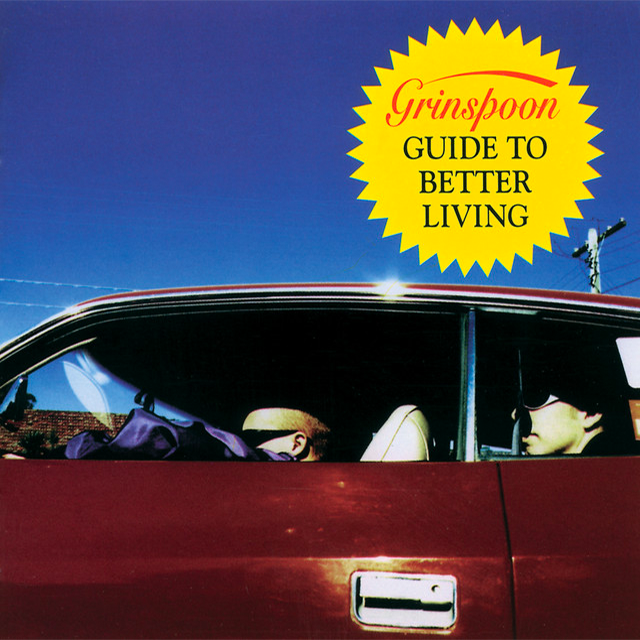
Grinspoon, 'Guide to Better Living'
These days, triple j’s Unearthed initiative is a ubiquitous part of the career trajectory of unknown Australian musicians, helping to serve as a launchpad into the heady world of fame, fortune, and—in some cases—world domination. But back in the Nineties, Unearthed was a burgeoning concept which saw the national broadcaster travel around the country, finding nascent artists, and giving them a spotlight. In true fashion, triple j struck gold early, with Lismore’s Grinspoon showing what sort of talent lay outside of the scope of major labels. Before long, Grinspoon found major national airplay by way of debut song “Sickfest”, with two EPs arriving in as many years. By early 1997 though, the group were recording their full-length debut. Working with Phil McKellar, the young band crafted an ambitious 16-track post-grunge collection which underlined their proficiency at writing dirty alt-metal riffs, immersive grooves, and choruses which seemed custom-made for the litany of festivals that filled the musical landscape. Singles such as “Just Ace”, “DCx3”, “Repeat”, “Don’t Go Away”, and “Champion” served as a testament to their ability to write immense singles so early into their career, while the likes of “Bad Funk Stripe” illustrated their versatility, and “Pressure Tested 1984” and “Post-Enebriated Anxiety” proved Phil Jamieson’s worth as a remarkable frontman.
Some critics might have lambasted the group for sounding too repetitive, but when your debut album boasts five singles that remain classics of Aussie rock, well, the legacy speaks for itself.
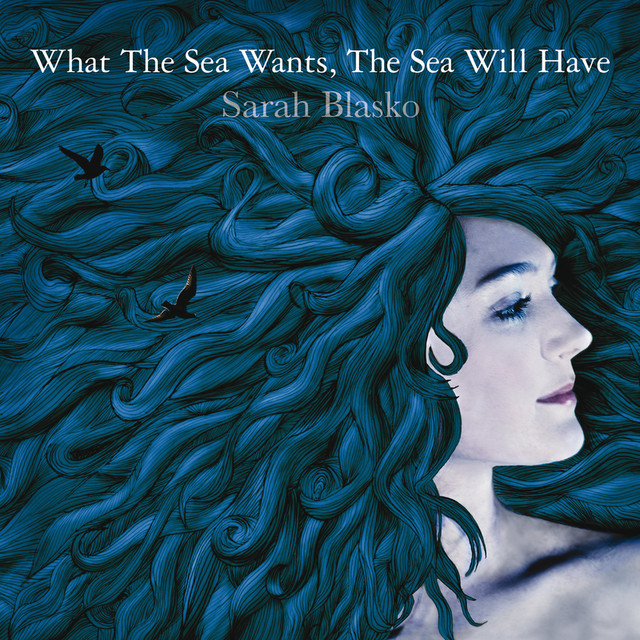
Sarah Blasko, ' What the Sea Wants, the Sea Will Have'
Released in 2006, Sarah Blasko’s sophomore record solidified the Sydney artist as a bonafide national gem. By this point, Blasko’s artistry had been marked by clear instrumental and arrangement skills and a mastery of emotional songwriting. With What The Sea Wants..., she bolstered the above and took it all further: 12 tracks of stellar alternative music that deftly moved between realms of ethereal pop, baroque, and melancholic rock.
The strength found across tracks like “{Explain}”, “The Albatross”, or even album opener “For You” makes them stand out as examples of how Blasko could balance underplayed musical moments with more expansive touchpoints. Vocally, Blasko stuns on a whole new level. Fans were instantly able to see how her artistry and creative process was evolving and encompassing more experimental charm.
The music, hypnotic and alluring, still retained a sense of wonderment that would become a theme of Blasko’s later work. Blasko brings strength to her songwriting; sure there are moments of vulnerability, but throughout, our heroine demonstrates a natural ability to retain control of her vision and where she takes the album.
A darker album than her 2004 debut—The Overture & the Underscore—What The Sea Wants... offered up Sarah Blasko as a songwriter who knew how to play with nuance and complexity in her songwriting. As an artist, she retained elements of intrigue and mystery about herself; the music spoke volumes about the interesting and unique artist she was continuing to evolve into.
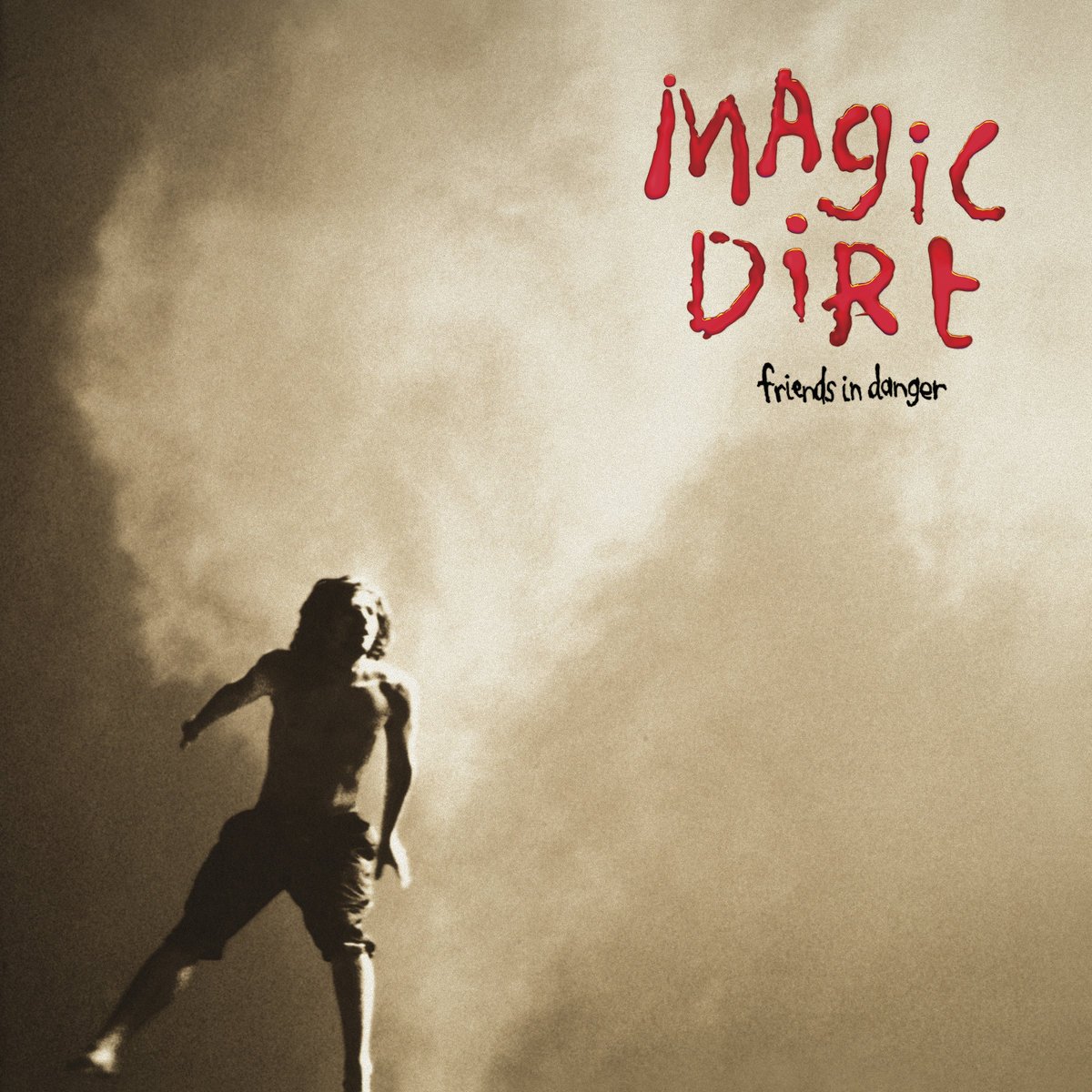
Magic Dirt, 'Friends In Danger'
By the time the mid-Nineties came around, Geelong outfit Magic Dirt were already two EPs and a handful of singles into their career, and were fast earning a reputation as one of the country’s must-see bands. With support slots for the likes of Hole, Pavement, and Sonic Youth, they’d been rubbing shoulders with alt-rock giants, all while carving out their own unique niche within the local scene. This local attention soon translated onto the international scene, too, with the band signing a two album deal with the US arm of Warner Bros as they began to write their debut album. When Friends in Danger arrived, the label wasn’t exactly impressed. Lacking the sort of commercial hits they had likely hoped for, the Dirt’s debut album was pretty representative of their live sound at the time. Working with Paul McKercher, the record might have featured live favourites such as “Sparrow” and “I Was Cruel”, but apart from these ragged, frenetic pieces of full-tilt rock, Friends in Danger experimented with the other end of things as well, with vocalist and guitarist Adalita Srsen’s blistering voice permeating the introspective eight-minute epic that is “Bodysnatcher”, while the likes of “Fear” and “Befriended Fallen Angel” straddled the line between existing in near-silence and as a full-blown wall of amplified noise. It might not have been the album that labels and critics expected, but it was the iconic debut that Magic Dirt needed to place them squarely on the map.

Paul Kelly and the Messengers, 'Under The Sun'
Paul Kelly is renowned for his ability to perfectly capture an honest representation of Australian life through his acoustically bright, character-driven tracks that explore life’s bitter lessons—and Under the Sun is no exception.
Cementing the singer as one of Australian music’s best storytellers, the record mixed rock‘n’roll grit with the emotional draw of soul music and the heart-tugging elements of country ballads.
It brought us emotionally charged tracks that touched on societal issues like “To Her Door”, which told the heart-wrenching tale of a couple who “hit the skids” as their relationship spirals out of control due to the debilitating effects of alcoholism.
However, the anthemic single apparently almost never saw the light of day.
“I write lots of music that never gets lyrics to it,” Kelly told triple j in 1998.
“I get little ideas on the guitar and I sing—or mumble more like it—into a tape recorder, and they just pile up, the tapes. Some of them get words to them, some of them just never do. I’ve got tapes since 1976.
“‘To Her Door’ was a song that was lying around on a tape for seven years before I got words to it. I had forgotten about it and then I played an old tape and there it was. And I thought ‘Oh, that’s pretty good’.”
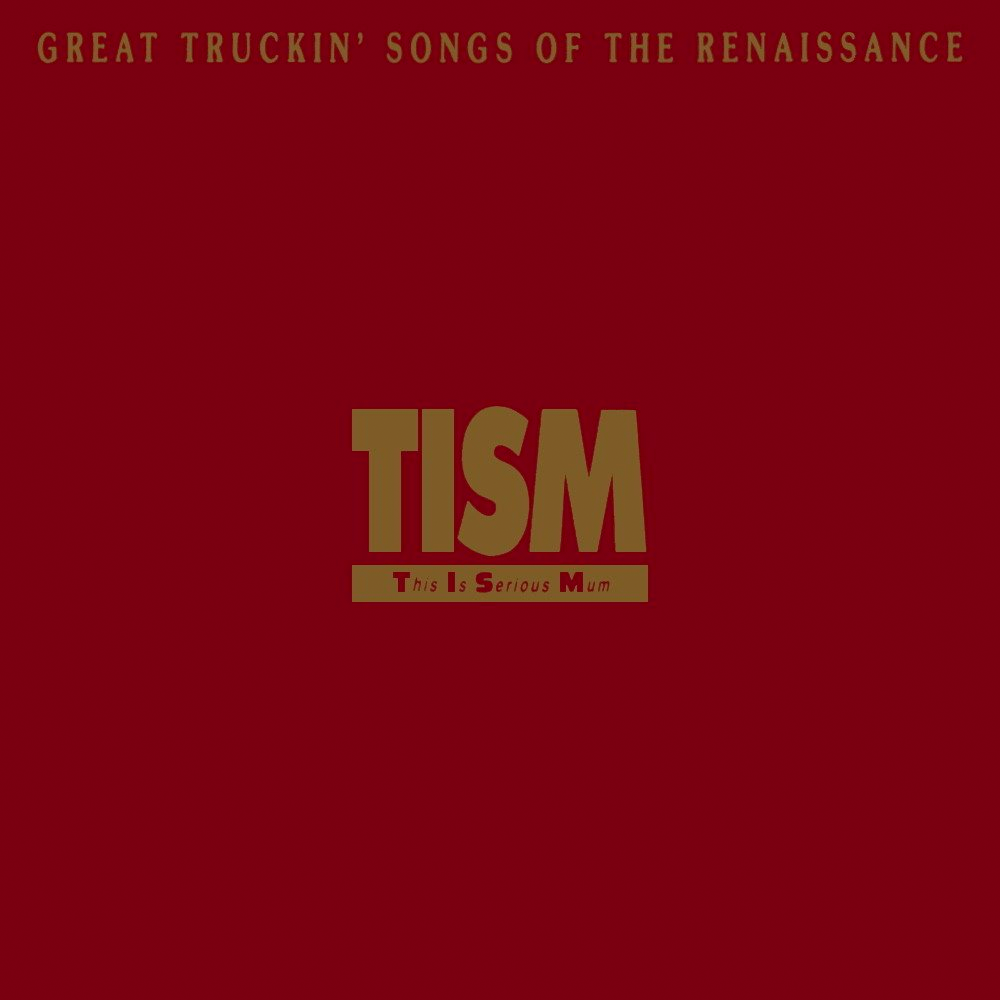
TISM, 'Great Truckin’ Songs of The Renaissance'
It’s an incredibly bold move for any artist to release a double album as their full-length debut, and it’s an even gutsier move to fill the second half with a mish-mash of live recordings and diatribes. But for Melbourne’s TISM, this is exactly the sort of behaviour that folks had come to expect by this point. Having grown a cult following in the previous few years, TISM had already managed to capture the attention of the masses, with their debut single—the controversially-titled “Defecate on My Face”—being packaged as a 7” in a sealed 12” sleeve. It was outrageous and indicative of what we could expect in the future. But when they unveiled their debut album, it was a masterful celebration of every facet that made them a beloved—and dangerous—band. Packing the first half with 12 tracks (five of which would be issued as singles), TISM showcased their musical and lyrical prowess, delivering powerful and accomplished compositions filled with the sharp, biting lyrics which would become their trademark. But while tracks like “Saturday Night Palsy”, “The Fosters Car Park Boogie”, and the oddly-introspective “40 Years – Then Death” filled the first side, the second half would illustrate their wilder side, with live recordings, early material, and media appearances complementing the traditional collection of standard tracks. It’s a bold move to burst onto the scene with such an ambitious and all-encompassing record, but if anyone could make it work, it was TISM.

The Whitlams, 'Love This City'
For newcomers to The Whitlams, Love This City could easily be mistaken for a mislabelled greatest hits compilation. For diehard fans, it remains a brief moment of hope amidst an era defined by personal tragedy. Following on from the commercial breakthrough of 1997’s Eternal Nightcap, their fourth album earned the Sydney outfit a bronze medal on the ARIA charts, and widespread acclaim for its singles. Guided by Tim Freedman’s smooth, magnetic voice, and his stellar piano work, Love This City showcased an eclectic selection of styles (most notably seen on the somewhat divisive “Chunky Chunky Air Guitar”), whilst maintaining their trademark sentiment and emotion with some of their most heartfelt work to date. While its title track remains a classic ironic look at the city of Sydney, singles such as “Thankyou (For Loving Me at My Worst)” and “Made Me Hard” remain perfect examples of the group’s accomplished songwriting. Of course, the hard-hitting “Blow Up The Pokies” (their equal-highest charting single) serves as both an ever-relevant plea and a grim foreshadowing, with bassist Andy Lewis passing away just three months after the record’s release due to a gambling addiction.
Yet, despite the tragedies that both preceded and succeeded Love This City, it stands tall as an almost euphoric example of what one of the country’s finest bands can do when they’re firing on all cylinders, unafraid to wear their hearts on their sleeves.



































